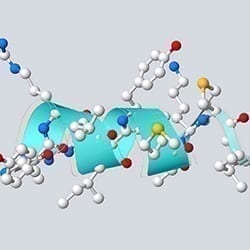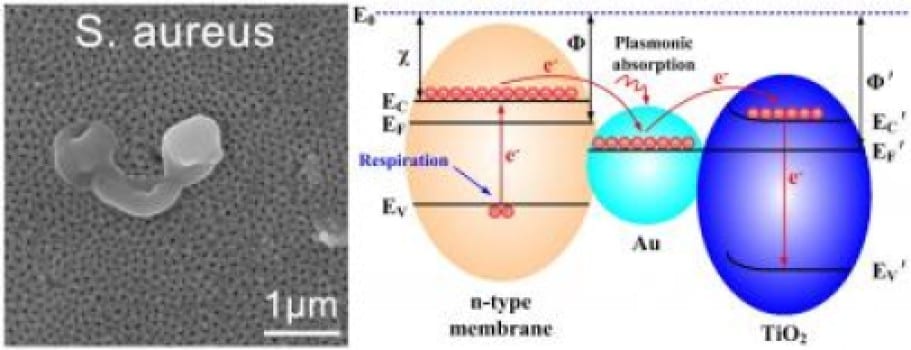Stanford bioengineers have invented a way to observe and report on the behavior of family of signaling proteins as they go about their crucial work inside living cells.
Think of the human body as an intricate machine whose working parts are proteins: molecules that change shape to enable our organs and tissues to perform tasks such as breathing or eating or thinking.
Of the millions of protein types, 500 in the kinase family are particularly important to drug discovery. Kinases are messengers: They deliver signals that regulate and orchestrate the actions of other proteins. Proper kinase activity maintains health. Irregular activity is linked to cancer and other diseases. For this reason, many drugs seek either to boost or suppress kinase activity.
Now Stanford bioengineers have invented a way to observe and report on the behavior of these signaling proteins as they go about their crucial work inside living cells.
“We’ve been able to observe multiple kinases functioning in living cells, which is something no one else has ever seen,” said Markus Covert, PhD, an assistant professor of bioengineering and senior author of a paper, published online June 19th in Cell, that describes the findings.
“Cancers can occur when a kinase inappropriately tells a cell to ‘grow, grow, grow,’” Covert said. “The reverse can also be true, if a cell reaches what should be the end of its normal life span but the kinase never says ‘die, die, die.’”
Using the new technique, researchers could observe and compare kinase activity in healthy versus diseased cells, then introduce an experimental drug to see how it affects the living cell.
Read more . . .
The Latest on: Kinases
[google_news title=”” keyword=”Kinases” num_posts=”10″ blurb_length=”0″ show_thumb=”left”]
via Google News
The Latest on: Kinases
- Sino Biological Finalizes the Acquisition of SignalChem Biotech, Strengthening Global Presence and Expanding Product Portfolioon April 26, 2024 at 11:26 am
BEIJING, China, April 26, 2024 (GLOBE NEWSWIRE) -- via NewMediaWire -- ("Sino Biological" or the "Company”), a biotechnology company listed on the Shenzhen stock exchange subsidiary ChiNext (SZSE: ...
- Revealing Protein-Ligand Interactions Using AI Enables Drug Discoveryon April 26, 2024 at 7:34 am
Researchers developed a method to assess the ability of small molecules to bind to hundreds of human proteins using AI and ML.
- Biodexa Enters Into Exclusive License to eRapa™, a Phase 3 Ready Asset for the Treatment of Familial Adenomatous Polyposis (FAP)on April 26, 2024 at 7:30 am
Biodexa Enters Into Exclusive License to eRapa™, a Phase 3 Ready Asset for the Treatment of Familial Adenomatous Polyposis (FAP) Worldwide rights come with $17 million in non-dilutive grant funding ...
- Differentiating cerebral cortical neurons to decipher molecular mechanisms of neurodegenerationon April 25, 2024 at 8:10 am
A research team led by Professor Haruhisa Inoue (Department of Cell Growth and Differentiation) derived iPS cells (iPSC) from α-synucleinopathy patients with early-onset familial Parkinson's disease ...
- RIPK3 inhibitor prevents lung damage in severe influenza infectionon April 23, 2024 at 5:00 pm
Remarkably, UH15-38 significantly improved survival outcomes even when given 5 days after infection. This contrasts with the current approved antiviral for influenza infection, oseltamivir, which ...
- Could New Alzheimer’s Marker p-Tau212 Rival p-Tau217?on April 19, 2024 at 4:59 pm
Among plasma biomarkers for Alzheimer’s disease, p-Tau217 stands tall as having the highest diagnostic accuracy. Now, in the March 23 Nature Communications, researchers led by Przemyslaw Kac, Thomas ...
- Researchers uncover human DNA repair by nuclear metamorphosison April 17, 2024 at 8:10 am
Researchers at the University of Toronto have discovered a DNA repair mechanism that advances understanding of how human cells stay healthy, and which could lead to new treatments for cancer and ...
- Discovery of bacterial proteins that induce asexual reproduction in insectson April 17, 2024 at 6:07 am
From microbes in the human gut to symbiotic algae in coral reefs, research in recent decades has increasingly revealed the pivotal roles that microorganisms (or microbial species) play in shaping the ...
- Combination therapy can delay resistance of lung cancer cellson April 16, 2024 at 12:08 pm
A specific genetic alteration, known as an ALK fusion, drives non-small cell lung cancer in some patients. This abnormality leads to excessive activity of the ALK protein, a key cancer promoter. These ...
- ICR scientists reveal new ways to convert inhibitor-style targeted cancer drugs into degraderson April 15, 2024 at 4:29 am
Researchers from the Institute of Cancer Research (ICR) have discovered a new way to convert inhibitor-style targeted cancer drugs into degraders, small molecules, to destroy cancer-promoting proteins ...
via Bing News











